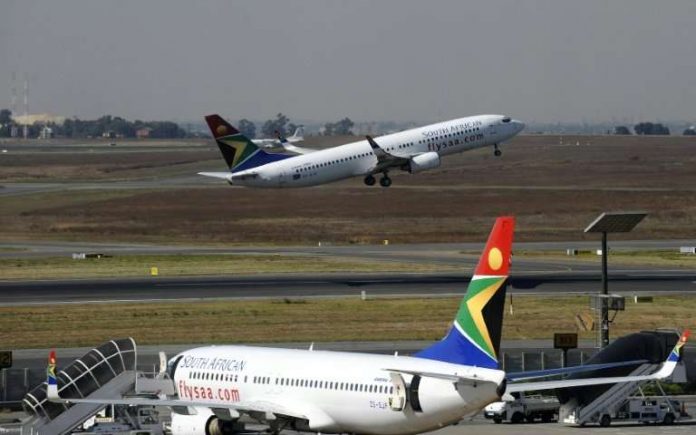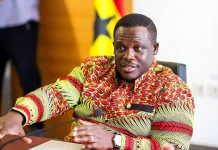
The next time you stow your tray table, fasten your seatbelt and prepare for take-off, there’s a good chance your pilot could be South African.
South African Airways (SAA) is being buffeted by financial turbulence and new chief executive Vuyani Jarana says he has ambitious plans to steer the company to safety.
One of his bold cost-cutting schemes involves leasing out SAA’s pilots and cabin crew to foreign airlines battling a global shortage of flight staff.
South Africa’s flag carrier has been running at a loss for a decade and is grappling with a $680 million (580-million-euro) debt mountain. It lost 5.6 billion rand ($420 million) in 2017-18.
“We are concerned about the survival of the airline,” said SAA spokesman Tlali Tlali, referring to the dire figures.
Tlali added that Jarana’s key objective was to protect SAA’s “employees and return to positive financial performance” — in other words, reduce overheads without laying off staff.
Sackings would be hugely unpopular with the flying public and the government, so the idea of contracting out under-used pilots and first officers could be just the ticket.
It could also help major airlines avoid cancellations such as those that plagued Europe’s biggest airline Ryanair which had to cancel thousands of flights from November because of an admin error that led to pilot shortages.
‘Poor controls’:
The crisis facing the industry has become so acute that Japan previously raised the age limit for commercial pilots to 67 to keep planes in the air. Some Chinese airlines have even sought to lure experienced captains with pay of up to $500,000.
The shortage is “becoming a crisis at some carriers, resulting in the cancellation of flights and other serious disruptions,” said Patrick Smith, a pilot who runs the “Ask the Pilot” aviation blog.
Seasoned SAA pilot Barry Elsip is one of those in line to be lent out — to Air Japan.
To sweeten the deal, he has been offered a “very lucrative salary” in US dollars as well as business class flights home every three weeks.
But despite the perks on offer, Jarana’s plan to lend pilots to airlines that may include Emirates, Turkish Airlines, Singapore Airlines, Cathay Pacific and Qatar Airways has been met with dismay from SAA’s pilots body.
SAA’s Pilots’ Association said it was “disappointed and dismayed” that some of its members, it claimed, would be forced to take a contract or take unpaid leave “as a result of extremely poor fiscal control and mismanagement”.
The association’s vice-chair, Captain Grant Back, said it would be preferable for SAA to put its pilots to use within its own network.
He said the destination airlines were badly short of pilots because of poor conditions, unfavourable work-life balance or in some cases labour relations problems.
‘Family left behind’
Despite acknowledging the higher salaries on offer, Back warned some pilots would not see their families for three or four weeks at a time. Others would have to move abroad “with children taken out of schools, friends and family left behind”, he said.
Something will have to give, as the airline is reputed to be chronically over-staffed at every level compared to competitors like British Airways.
Local media report that the carrier has 50 pilots and cabin crew on the payroll with “nothing to do”.
Aviation analyst Joachim Vermooten said there were many countries with a shortage of pilots and SAA had many skilled staff ready to fill the gaps.
“It’s a good way to reduce the cost base, which SAA desperately needs to do,” he told AFP.
Other cost-cutting measures will include slashing routes and flight frequencies.
But Jarana has warned that employee cuts will be unavoidable with unions criticising SAA’s catering arm, Air Chefs, for preparing to lay-off 118 workers.
Time might be running out to rescue the ailing airline — President Cyril Ramaphosa hinted recently that state support will not be limitless.
The country’s treasury was forced to hand SAA five billion rand earlier this year to keep it airborne, the latest in a string of handouts.
Failure could cost Jarana dearly: he has vowed to hand 100,000 rand of his own money to charity if the rescue plan fails to take off.























